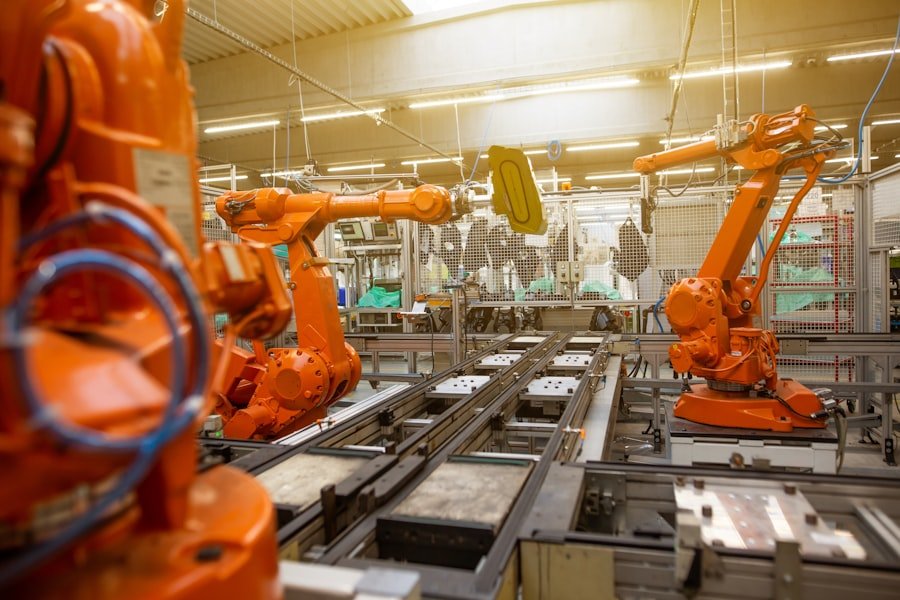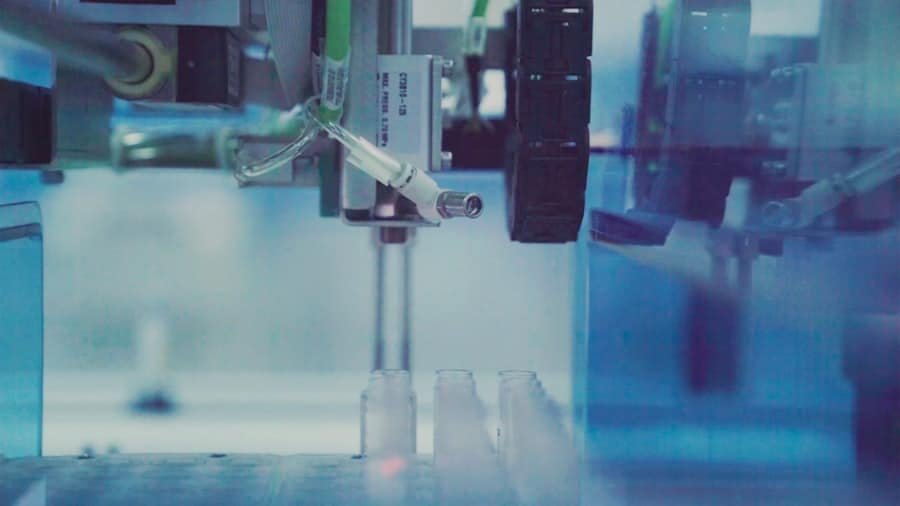AI-powered automation represents a significant evolution in the way businesses operate, merging the capabilities of artificial intelligence with automated processes to enhance efficiency and productivity. At its core, this technology leverages machine learning algorithms, natural language processing, and data analytics to perform tasks that traditionally required human intervention. The integration of AI into automation systems allows for more sophisticated decision-making, enabling machines to learn from data patterns and improve their performance over time.
This shift not only streamlines operations but also opens up new avenues for innovation across various sectors. The concept of automation itself is not new; however, the infusion of AI has transformed it from simple task execution to complex problem-solving. For instance, traditional automation might involve programming a machine to perform repetitive tasks, such as assembling products on a production line.
In contrast, AI-powered automation can adapt to changing conditions, optimise workflows in real-time, and even predict maintenance needs before they become critical issues. This dynamic capability is particularly valuable in environments where flexibility and responsiveness are paramount, such as manufacturing, logistics, and customer service.
Summary
- AI-powered automation refers to the use of artificial intelligence to automate tasks and processes, improving efficiency and accuracy.
- Artificial intelligence plays a crucial role in automation by enabling machines to learn from data, make decisions, and perform tasks without human intervention.
- The benefits of AI-powered automation include increased productivity, cost savings, improved accuracy, and the ability to handle complex tasks.
- Industries such as healthcare, finance, manufacturing, and customer service are utilizing AI-powered automation to streamline operations and improve outcomes.
- Challenges and limitations of AI-powered automation include the potential for job displacement, data privacy concerns, and the need for ongoing maintenance and updates.
The Role of Artificial Intelligence in Automation
Artificial intelligence plays a pivotal role in enhancing the capabilities of automation systems. By employing advanced algorithms, AI can analyse vast amounts of data at speeds unattainable by humans, identifying trends and insights that inform decision-making processes. For example, in supply chain management, AI can forecast demand fluctuations by analysing historical sales data, market trends, and even social media sentiment.
This predictive capability allows businesses to adjust their inventory levels proactively, reducing waste and improving customer satisfaction. Moreover, AI enhances the adaptability of automated systems. Traditional automation often relies on fixed rules and pre-defined parameters, which can limit its effectiveness in dynamic environments.
In contrast, AI-driven automation systems can learn from their experiences and adjust their operations accordingly. For instance, in customer service applications, chatbots powered by natural language processing can understand and respond to customer inquiries more effectively over time as they learn from previous interactions. This ability to evolve not only improves the user experience but also reduces the need for constant human oversight.
Benefits of AI-Powered Automation

The advantages of AI-powered automation are manifold and can significantly impact an organisation’s bottom line. One of the most notable benefits is increased efficiency. By automating routine tasks, businesses can free up human resources to focus on more strategic initiatives that require creativity and critical thinking.
For example, in the financial sector, AI can automate data entry and transaction processing, allowing financial analysts to concentrate on interpreting data and making informed investment decisions. Cost reduction is another compelling benefit of AI-powered automation. By minimising human error and optimising processes, organisations can achieve substantial savings in operational costs.
In manufacturing, for instance, AI systems can monitor equipment performance in real-time, predicting failures before they occur and thereby reducing downtime and maintenance costs. Additionally, the scalability of AI solutions means that businesses can expand their operations without a corresponding increase in labour costs, further enhancing profitability.
Industries Utilizing AI-Powered Automation
AI-powered automation is making significant inroads across a variety of industries, each reaping unique benefits tailored to their specific needs. In healthcare, for example, AI is revolutionising patient care through automated diagnostic tools that analyse medical images with remarkable accuracy. These systems can assist radiologists by flagging potential issues in X-rays or MRIs, thereby expediting the diagnostic process and allowing for quicker treatment decisions.
The retail sector is also harnessing the power of AI-driven automation to enhance customer experiences. Automated inventory management systems use AI algorithms to predict stock levels based on sales trends and seasonal fluctuations. This not only ensures that popular items are always available but also reduces excess inventory that can lead to markdowns and losses.
Furthermore, personalised marketing campaigns powered by AI analyse customer behaviour to deliver targeted promotions, increasing conversion rates and customer loyalty.
Challenges and Limitations of AI-Powered Automation
Despite its numerous advantages, AI-powered automation is not without its challenges and limitations. One significant concern is the potential for job displacement as machines take over tasks traditionally performed by humans. While automation can lead to increased efficiency and cost savings, it also raises questions about the future of work and the need for reskilling employees whose roles may become obsolete.
The transition to an automated workforce necessitates a careful approach to workforce management and training. Another challenge lies in the complexity of implementing AI systems within existing infrastructures. Many organisations face difficulties integrating new technologies with legacy systems that may not be compatible with modern AI solutions.
This integration often requires substantial investment in both time and resources, which can deter businesses from pursuing AI-powered automation initiatives. Additionally, there are concerns regarding data privacy and security; as organisations collect vast amounts of data to train their AI models, they must ensure that this information is protected against breaches and misuse.
Future of AI-Powered Automation

The future of AI-powered automation appears promising as advancements in technology continue to unfold. One area poised for growth is the development of more sophisticated machine learning algorithms that can handle increasingly complex tasks with minimal human intervention. As these algorithms become more refined, we can expect to see a broader range of applications across various sectors, from autonomous vehicles in transportation to advanced robotics in manufacturing.
Moreover, the integration of AI with other emerging technologies such as the Internet of Things (IoT) will further enhance the capabilities of automated systems. IoT devices generate vast amounts of data that can be analysed by AI algorithms to optimise processes in real-time. For instance, smart factories equipped with IoT sensors can monitor equipment performance continuously and use AI to predict maintenance needs or adjust production schedules dynamically based on demand fluctuations.
This synergy between AI and IoT will likely lead to unprecedented levels of efficiency and innovation.
Ethical Considerations in AI-Powered Automation
As organisations increasingly adopt AI-powered automation, ethical considerations become paramount. One pressing issue is the transparency of AI decision-making processes. Many AI systems operate as “black boxes,” where the rationale behind their decisions is not easily understood by humans.
This lack of transparency can lead to mistrust among users and stakeholders, particularly in critical areas such as healthcare or finance where decisions can have significant consequences. Additionally, there are concerns regarding bias in AI algorithms. If the data used to train these systems contains inherent biases, the resulting automated decisions may perpetuate or even exacerbate existing inequalities.
For example, biased algorithms in hiring processes could disadvantage certain demographic groups if historical hiring data reflects discriminatory practices. Addressing these ethical challenges requires a concerted effort from organisations to implement fair practices in data collection and algorithm development while fostering an inclusive environment that prioritises diversity.
Implementing AI-Powered Automation in Business
Successfully implementing AI-powered automation within a business requires a strategic approach that encompasses several key steps. First and foremost, organisations must identify specific areas where automation can deliver tangible benefits. This involves conducting a thorough analysis of existing processes to pinpoint inefficiencies or bottlenecks that could be alleviated through automation.
Once potential areas for automation have been identified, businesses should invest in the necessary infrastructure and technology to support AI implementation. This may involve upgrading legacy systems or investing in cloud-based solutions that offer scalability and flexibility. Furthermore, engaging employees throughout the process is crucial; providing training and resources will help ease the transition and foster a culture of innovation within the organisation.
Finally, continuous monitoring and evaluation are essential to ensure that AI-powered automation initiatives are meeting their intended goals. By regularly assessing performance metrics and gathering feedback from users, organisations can make informed adjustments to their systems and processes over time. This iterative approach not only maximises the benefits of automation but also positions businesses to adapt swiftly to changing market conditions and technological advancements.
AI-Powered Automation is revolutionising the way businesses operate, as discussed in the article Marketing and Sales. This technology is streamlining processes and increasing efficiency across various industries. In a related article, 4 Simple Ways to Brand Your Business for Success, the importance of branding in the age of automation is highlighted. Businesses must adapt their branding strategies to remain competitive in a rapidly changing landscape.
FAQs
What is AI-Powered Automation?
AI-powered automation refers to the use of artificial intelligence (AI) technology to automate tasks and processes that would typically require human intervention. This can include anything from data analysis and decision-making to repetitive tasks and customer service interactions.
How does AI-Powered Automation work?
AI-powered automation works by using machine learning algorithms and other AI technologies to analyse data, make decisions, and perform tasks without human intervention. These systems can learn from experience and improve their performance over time.
What are the benefits of AI-Powered Automation?
The benefits of AI-powered automation include increased efficiency, reduced human error, cost savings, and the ability to handle large volumes of data and tasks at scale. It can also free up human workers to focus on more complex and creative tasks.
What are some examples of AI-Powered Automation?
Examples of AI-powered automation include chatbots for customer service, predictive maintenance for machinery, automated data analysis and reporting, and robotic process automation for repetitive tasks such as data entry.
Is AI-Powered Automation replacing human jobs?
While AI-powered automation can replace some repetitive and routine tasks, it also creates new opportunities for human workers to focus on more complex and creative work. It is important to consider the impact on the workforce and ensure that workers are equipped with the skills needed to work alongside AI-powered systems.
